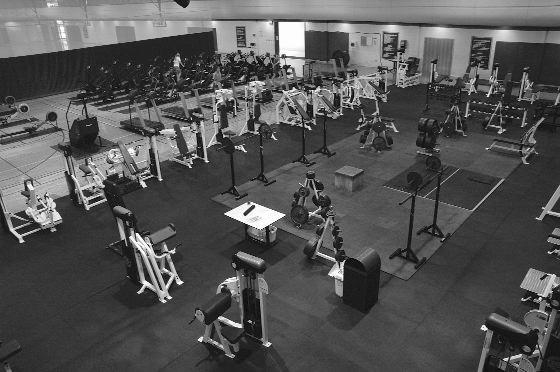Construction begins this semester to enlarge the Student Recreational Sports Complex. Cardio equipment will be moved to the gym courts, but the location change is only temporary, said Mike Giles, associate director of University Recreation.
Giles said the $5.2 million project is being completed in phases. Construction begins in September to expand the cardio room and renovate other areas of the complex. The first of three phases includes renovations on second floor facilities, closing the second floor.
Front access to the complex will be closed in the spring, Giles said. Other areas may be closed down during other phases of the renovation plan. The plan estimates that the renovations will be finished by fall 2006.
“The major impact will be on group exercise participants,” Giles said. “The make-up location of the classes will change to different locations in the building.”
The main weight room will double in size, and the cardio room will be enlarged to hold 60 machines and up to 10 televisions. Expansion plans also include three new studios for exercise classes and a Smoothie King in the vending area.
“The way we utilize space and the way we design will make it more accommodating and more efficient,” Giles said.
But Giles compared the space-utilization concept to a “double-edged sword.”
“We hope to invite more students to the complex by making it more modern and state-of-the-art, but it’s going to show that we’re still not large enough to accommodate the campus needs,” he said.
The complex was built in 1992 from plans drawn in 1986. Since then, the student population has grown, totaling 29,294 in spring 2005, but the facility has not grown with it.
The national average for student recreational complexes is 10 to 12 square feet per student, but the University’s complex provides five to seven square feet per student, Giles said.
Despite construction inconveniences, some students are not worried that their exercise regimens will be interrupted.
Caroline Boelte, political science freshman walking into the complex, said the renovations do not affect committed exercisers.
“It just depends on how dedicated you are,” Boelte said. “If you’re looking for an excuse not to exercise, it won’t be hard with the construction.”
Diane Geheber, an alumna going to the complex to work out, said she can tell workers have moved equipment but has not seen major construction yet.
The project is funded primarily from student fees. University Recreation student fees increased in 2003 from $30 to $45 during the fall and spring semesters and $15 to $20 during the summer semester.
“We conducted a major survey and had student focus groups and forums to find out what students wanted,” Giles said of the brainstorming process to develop a renovation plan. “One of our biggest complaints is about the lack of space. We are not big enough.”
Designers included a second recreational complex for the west side of campus in the University’s master plan, but there is currently no plan to start construction on a complex in that area, Giles said.
Contact Leslie Ziober at [email protected]
Renovations to create more space
August 23, 2005




